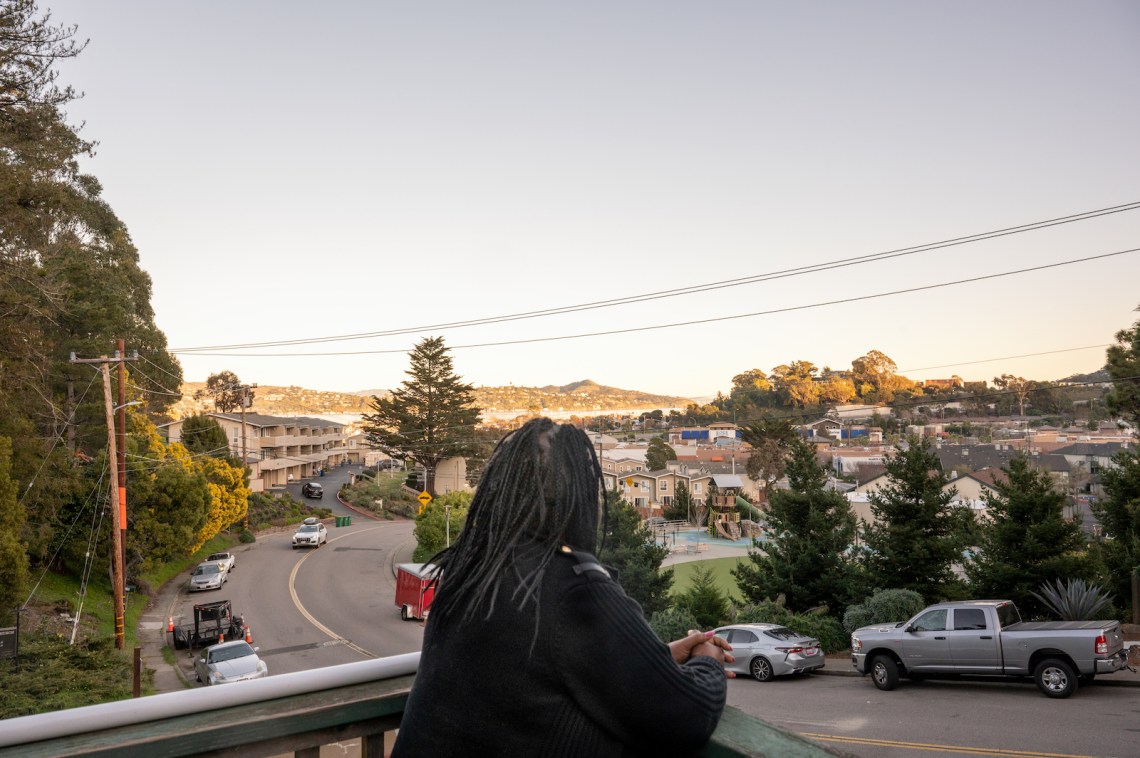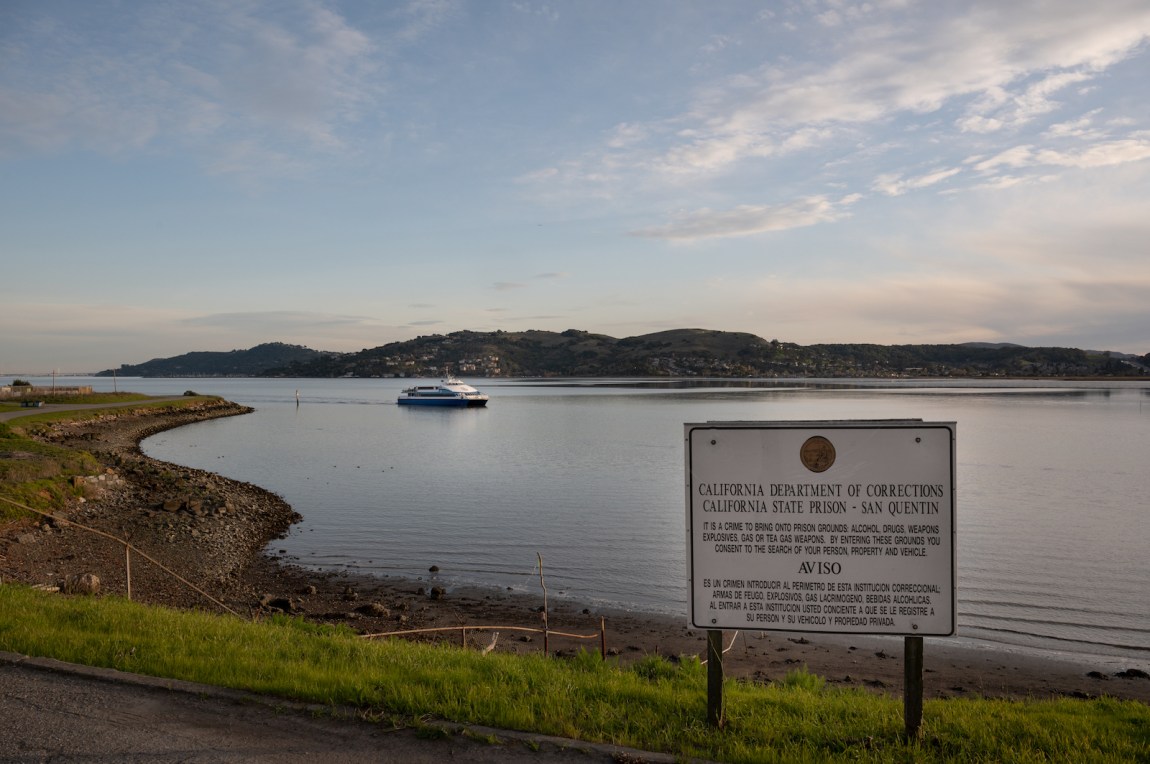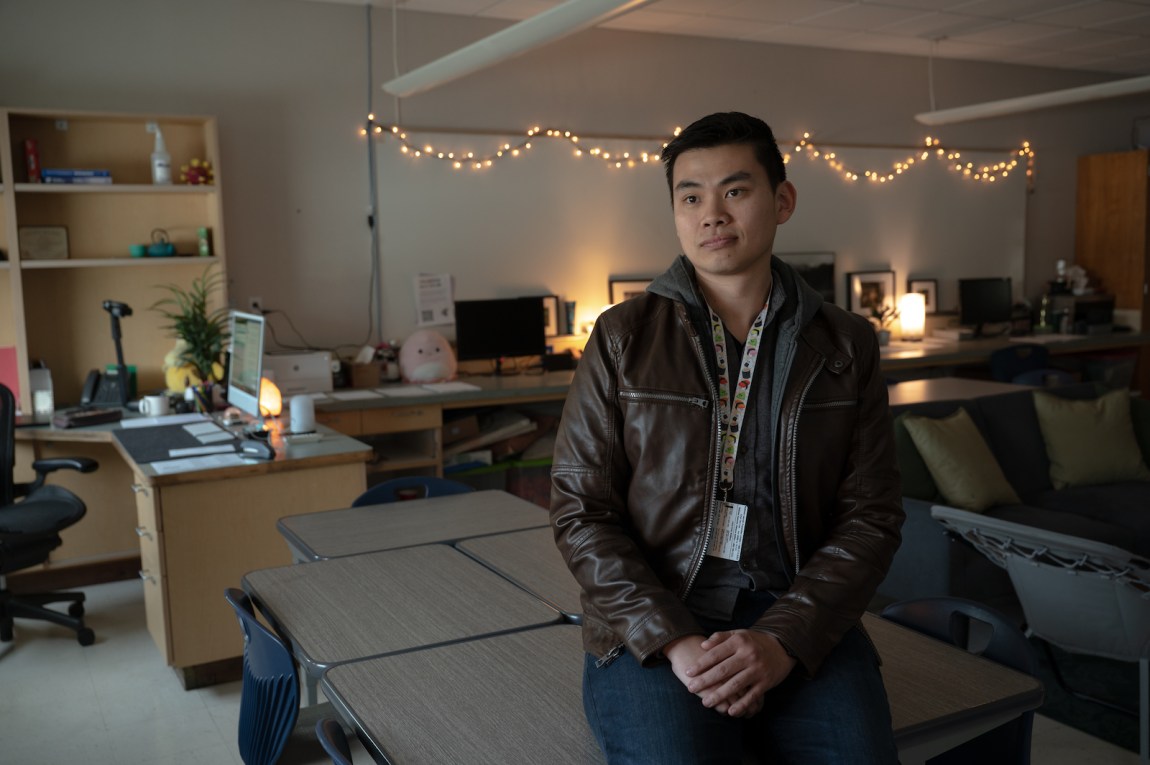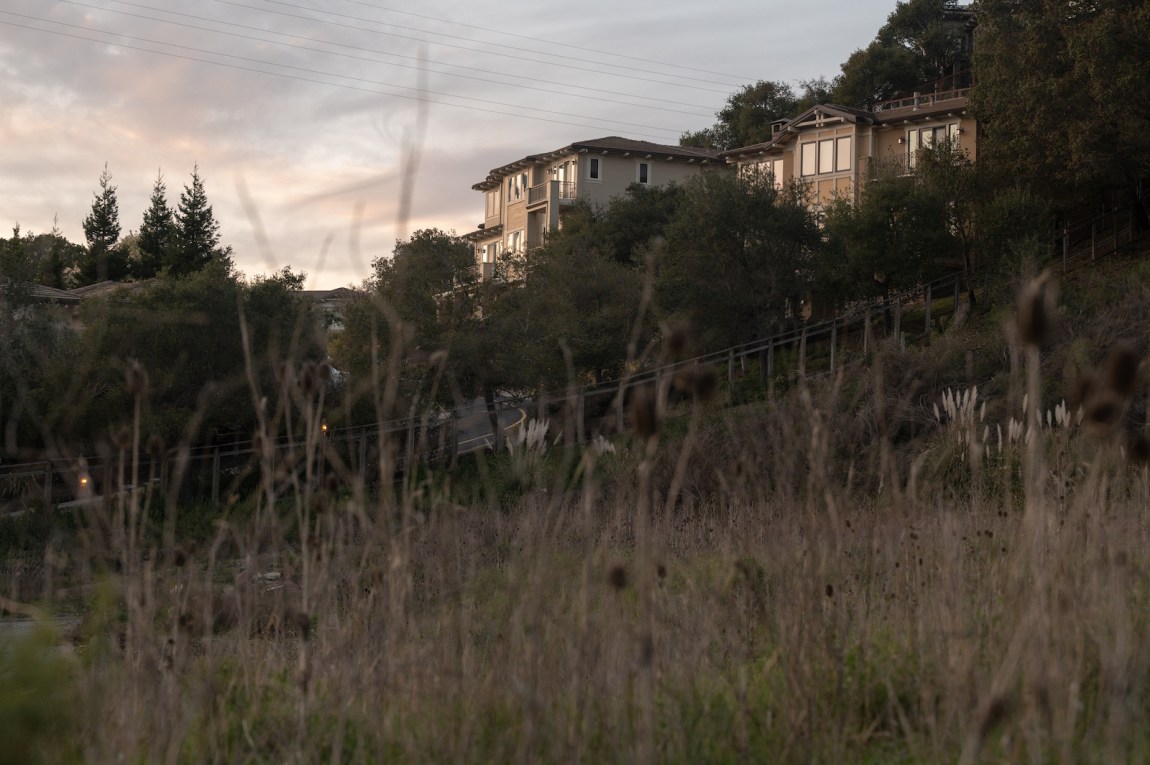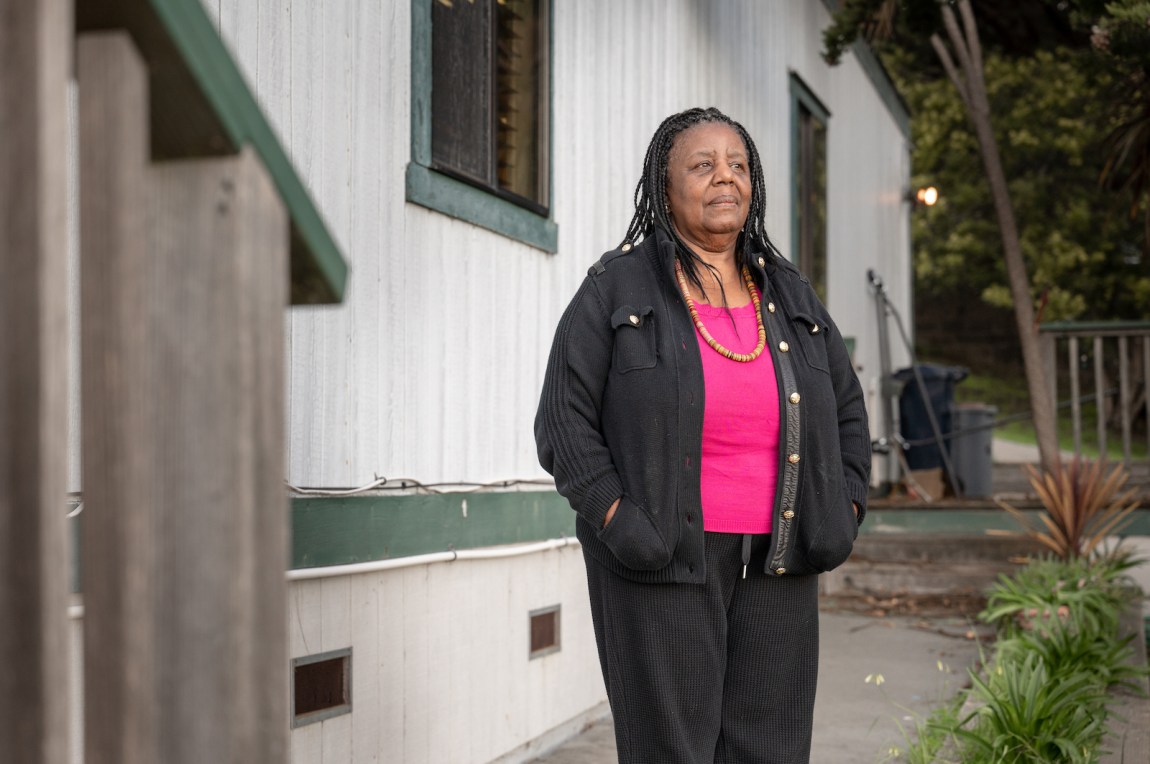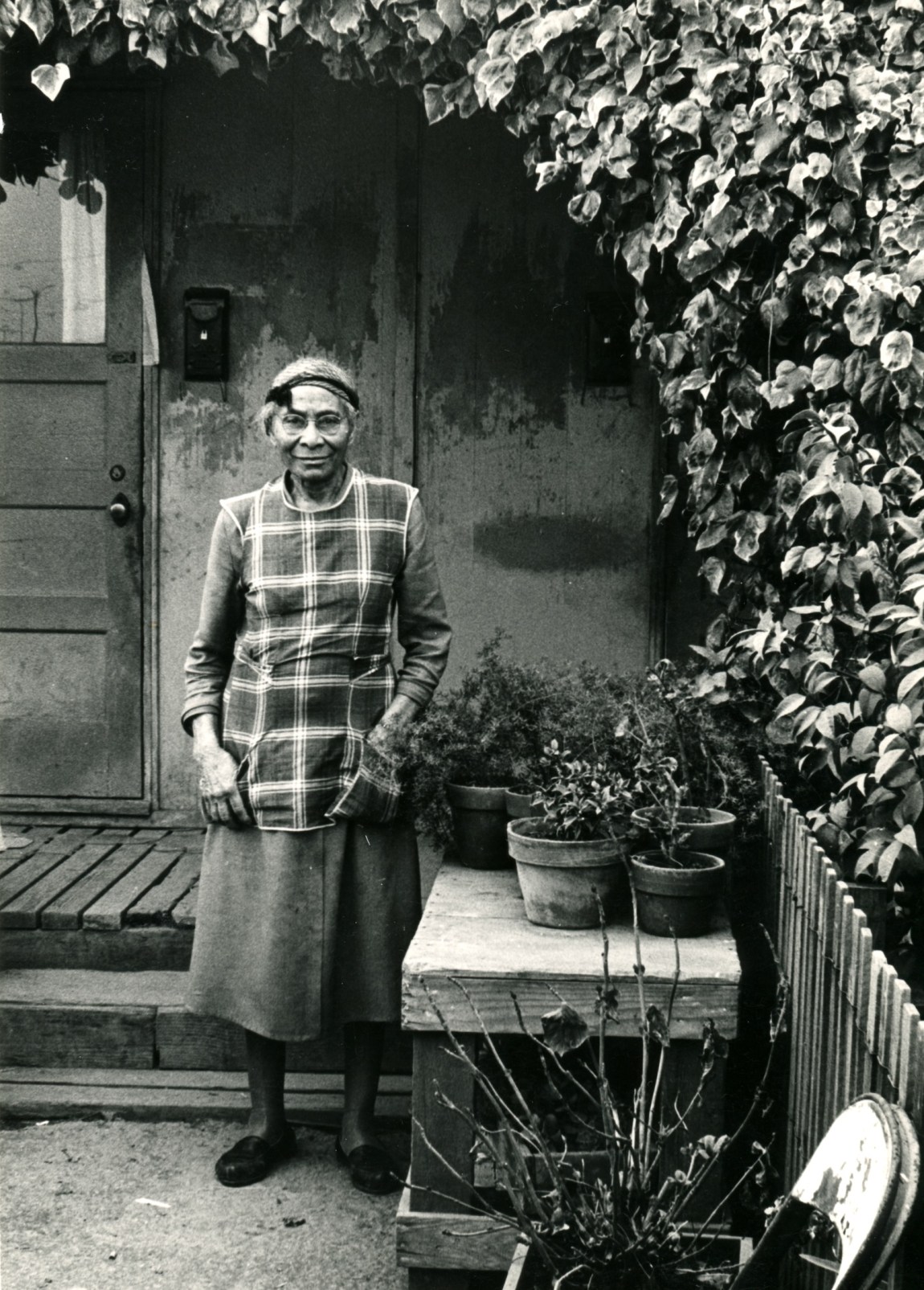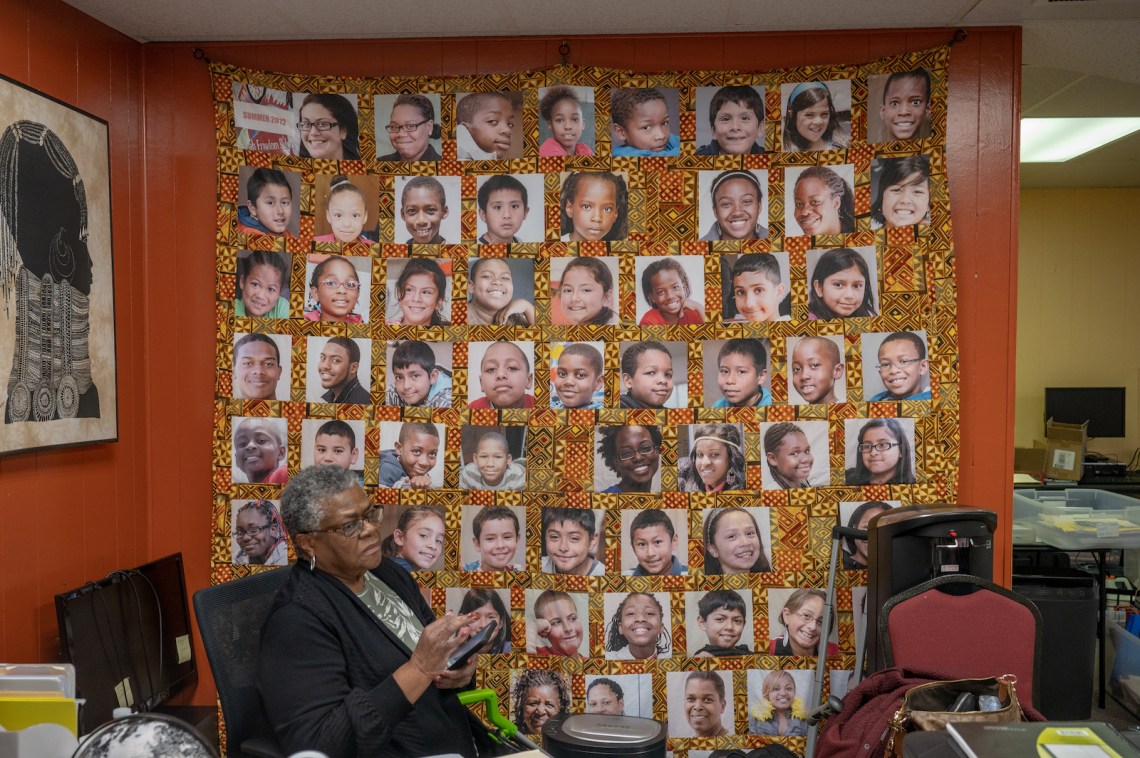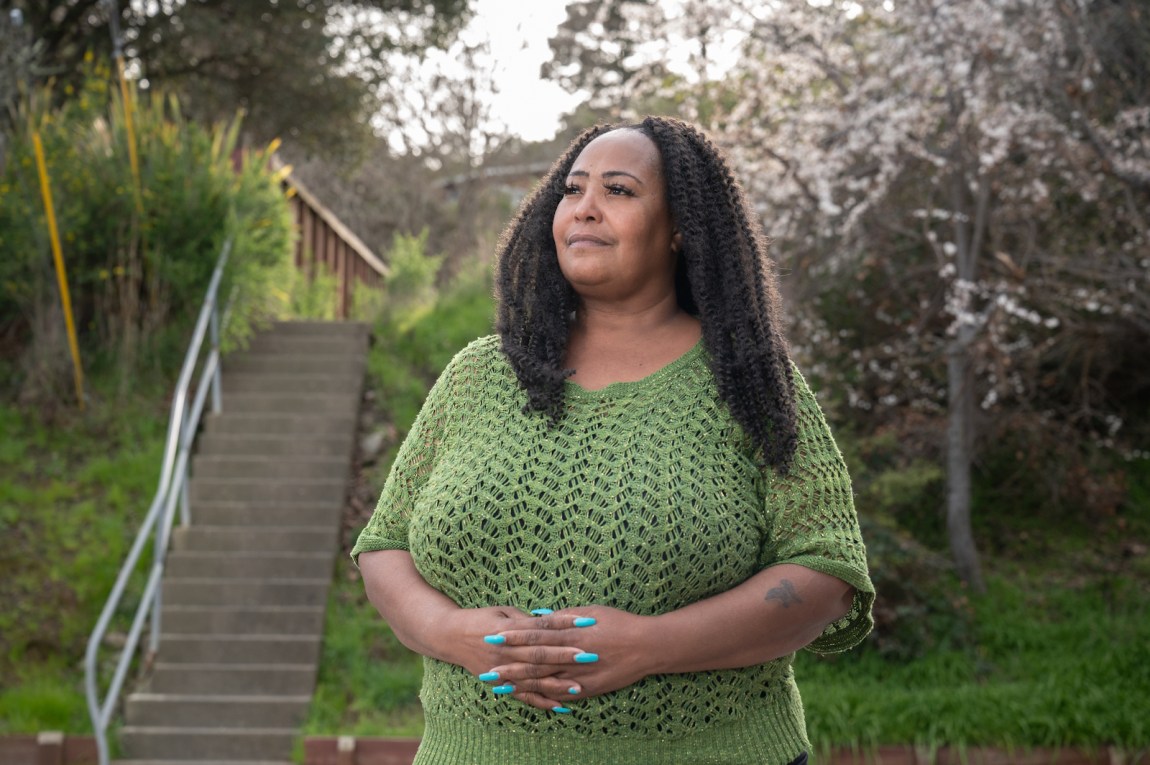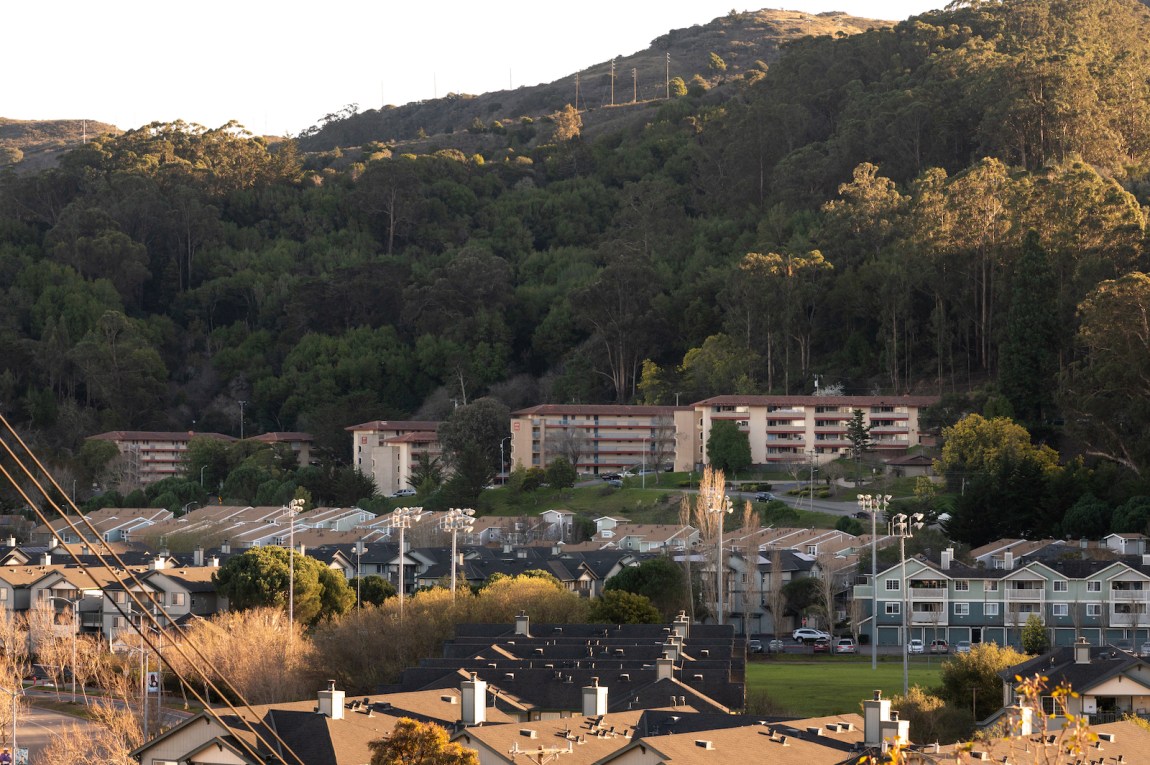1.
The language on the website of the California Department of Corrections and Rehabilitation dedicated to San Quentin State Prison parrots the cheery diction of a real estate ad. “Thirty Minutes from San Francisco and twenty from Oakland,” it reads, “San Quentin the community and state prison hug the San Francisco Bay with some of the most incredible views anywhere in the United States and beyond.” The tonal lapse is understandable, if not exactly in good taste. California’s oldest prison occupies some of its most valuable waterfront property. The daughter of a San Francisco real estate broker told me recently that her mother speaks wistfully of the San Quentin land every time they drive over the bridge that connects the East Bay to Marin County. If someone could get their hands on it, she says, it’d be the most expensive housing in the state.
It’s been tried. A few years before the 2008 financial collapse a Republican state senator became preoccupied with the idea of privatizing the land. He estimated that California could get $2 billion dollars for it. “Our inmates just don’t need an ocean view,” he explained. Despite three bills proposed over several sessions, the senator never got his way. And yet today there is a plan to build 250 housing units on San Quentin property. The prison will remain (though there too, transitions are underway), and the state isn’t selling the land—it’s leasing around 8.5 acres to the developers for a dollar a year to build apartments for county employees and low-income residents.
California is embarking on this somewhat unorthodox arrangement because it is mired in a historic housing crisis. That statement is so obvious and widely repeated that it can sound trite—and yet it still somehow understates the gravity of the problem. “What we have are multiple overlapping crises in housing,” Stephen Menendian, the assistant director of UC Berkeley’s Othering and Belonging Institute, told me. Rent is too high, homelessness is astronomic; there are simply not enough places for people to live. California ranks forty-ninth of the fifty states in its proportion of housing units to people, its home prices far outstrip those elsewhere, and it has made policy decisions in response to these realities that have only exacerbated them. Instead of allocating resources toward preventing evictions and addressing unhoused people’s needs, homelessness is relentlessly criminalized. And the state, like the rest of the country, has jettisoned public housing as a solution, instead doling out tax incentives to private developers.
Desperation breeds creativity, and California has lately undertaken a number of initiatives designed to expedite development, including a 2019 executive order in which Governor Gavin Newsom directed his Department of General Services to identify state-owned land where housing might be built. The San Quentin land was one of the first ten plots the department selected. The Oak Hill development planned for the site circumvents local and county zoning restrictions and procedures—and thus won’t fall victim to the well-resourced community resistance that has torpedoed so many other housing projects in Marin over the years.
Bruce Dorfman, the developer in charge of the half of the project dedicated to housing the county’s public workforce, seldom works in Marin, though he is based there. “Until this most recent set of laws over the past five, seven years…it was a nightmare trying to get projects approved,” he told me. Dorfman is encountering resistance from homeowners to another project he’s working on in Belvedere. “They don’t think these housing laws apply to them,” he said, “because they paid—I mean, this is a direct comment from some of the residents—they paid so much for their homes, they shouldn’t have to deal with this shit.” The antigrowth rhetoric can be so hyperbolic that it approaches farce: one group warned that under a proposed redevelopment scheme Marin would become a “mini-Manhattan.”
Oak Hill has met with the customary opposition from its neighbors, but it has also received an outpouring of support from the broader Marin community. It seems that people have finally realized something needs to change. “The housing crisis has gotten so bad that we’ve seen, in the last couple of years, the window of what’s possible getting larger,” said Ben Metcalf, who runs Berkeley’s Terner Center for Housing Innovation. Even the state’s wealthiest have begun to feel the effects of pervasive inequality and the scarcity of affordable housing, albeit obliquely: their children’s schools are understaffed because teachers who work in Marin cannot afford to live there anymore. And so 101 of the Oak Hill apartments will be dedicated to educators, a feel-good move—and a canny one. It would be hard to object to it without seeming churlish.
Advertisement
The crisis is not, of course, unique to Marin, but it’s particularly palpable on the soil from which the first seeds of the antigrowth movement sprouted. More starkly than most places in California, Marin illustrates the lasting consequences of the country’s uneven postwar investment in the middle class. It shows how the inheritors of those spoils turned away from the radical possibilities of collective struggle and the counterculture and inward, toward self-indulgence and wealth accumulation—and how they reached for policies that would allow them to tighten their hold on the land itself, at the expense of their own children. You can even understand why they made that bargain, since the value and promise of that land are clear here—from the multimillion-dollar homes on the Tiburon Peninsula to the untouched wilderness of Point Reyes to the wealthy bohemian enclave of Bolinas. The question now is whether it can be a place for normal people to live again, too.
*
The population of Marin County is around 260,000, the size of one council district in Los Angeles. It’s a place of immense natural beauty: stark bluffs, austere beaches, redwoods, vast expanses of land untouched by development. “I don’t mean to sound too provincial, but I think God kissed the earth here,” Dorfman told me when I asked why he moved to the county back in the 1980s. David Herr, the head of the homeowners’ association that represents the neighborhood abutting the Oak Hill site, called the area “our little corner of paradise.”
It can be hard to tell today, but it was also once a place where working-class people lived comfortably. Morgan Agnew, a high school math teacher in San Rafael who also serves as president of his local teachers’ union, told me that his grandfather, also a teacher, purchased a house in Mill Valley for $10,000 around 1955. “There was a time in Marin County where a teacher could buy a respectable single-family home for the equivalent of a couple of years of their income,” he said. “And we’re a very long distance from there.” When Eva Chrysanthe, an independent researcher and activist who spends much of her time perusing the county archive and filing public records requests, was growing up in Mill Valley, there were still plumbers living in Tiburon, now one of the wealthiest parts of an already wealthy county. Back then, she said, the richest locals were doctors and lawyers, and the occasional rock star. Today Marin has become a haven for people who possess a type of wealth that didn’t once exist: tech and hedge fund money, IPO fortunes.
Starting in the 1960s, as a burgeoning conservationist movement forestalled plans for large-scale development in the county, Marin’s gorgeous vistas and good vibrations occasioned a collective pilgrimage of counterculture types. A 1978 NBC documentary that Chrysanthe sent me, I Want It All Now!, also invokes an “earthly paradise,” the epicenter of “lifestyle.” It captures the mood of that transition, albeit in somewhat sensationalized fashion: the documentary’s subjects are featured getting nude massages with peacock feathers and becoming gurus in the name of self-actualization and the Human Potential Movement.
But there’s trouble in paradise. The elements of this volatile Eden are rattled off one by one: joggers, drinkers, ecologists, redwood hot tubs, psychiatrists, every type of therapist you can imagine. The documentarians speculate about the effects of narcissism on the Marin psyche and emphasize the county’s rates of suicide (twice the national average) and divorce (75 percent). A head shop called The Pleasure Principle features prominently. They interview Cyra McFadden, the author of an evocatively illustrated novel satirizing Marin, who speaks of “lives that leave a trail of human wreckage behind them.”1 The narrator maintains the controlled glee of a square confirming for himself that hedonism doesn’t always pay.
These settlers built up their new home just enough to give themselves space to stay there. Then they stopped. “Development regulations and environmental regulations really were pioneered, in a large sense, in Marin County,” said Menendian. In 1973 the county was partitioned into three corridors: coastal, rural, and urban. Development was limited to the third zone. “Originally the idea was to create density in the 101 corridor,” said Dorfman. “Well, the first residents got into the 101 corridor, and they said, no more. We can’t handle it.”
Today over 80 percent of Marin is strictly protected against development. New construction in the county is at a crawl: only 1,700 units were built in the last decade, compared to 21,000 during the 1970s. “That’s local control,” Dorfman said flatly. A study by Menendian’s institute in 2020 found that Marin is by far the most segregated county in the Bay Area, with only three census tracts where the black population is greater than 4 percent. One of them is San Quentin.
Advertisement
*
In 1978, the year I Want It All Now! was released, taxpayers revolted. It was becoming much more expensive to buy a home in California than anywhere else in the country, and inflation was rampant. The result was Proposition 13, which rolled most property value assessments back to 1975 levels and restricted taxes to one percent of that assessed value, plus inflation, bestowing an eternal subsidy on homeowners at the expense of basically everyone else. Fueled by undisguised racial resentment toward government investment in nonwhite communities, including welfare and school desegregation efforts, it passed easily.
Today homeowners in Marin who got there at the right time are still paying taxes on their homes as if they had essentially the same value they did the year Jimmy Carter was elected, adjusted for inflation. The most expensive neighborhoods have the biggest subsidies, because those residents were more likely to be able to buy homes back in the 1970s and the values of those homes have gone up more over time. In Tiburon, minutes from Oak Hill, the average tax subsidy is $15,000, and there are residents whose three-million-dollar properties set them back just a few thousand dollars a year. If any of those houses sold tomorrow, it would instantly be reassessed at its present value, meaning the new owners would pay roughly ten times as much in taxes.
Prop 13 changed everything. It can reasonably be said to have kickstarted the Reagan Revolution—the former California governor called for voters to take Prop 13 as an opportunity to “light a prairie fire” against government overspending, and went on to make tax reduction a central promise of his 1980 presidential campaign. Closer to home, California’s property tax revenue immediately dropped by 60 percent, and over the next twenty years its schools went from enjoying the fifth highest funding per student in the country to the forty-seventh, plummeting in the academic rankings to match. Meanwhile the state’s prison spending ballooned.
The ballot measure also disincentivized housing construction. “If you run your city budget with sales tax, it’s much easier to say, ‘Apple, come build a building the size of the Pentagon’—because then you get a slice of the pie for every iPhone,” said Linda Mandolini, whose firm is building the low-income apartments at Oak Hill. “It’s the tool a lot of cities use to say no to housing.”
For workers in the school system, the combined effect of housing scarcity and depressed wages has been ruinous. A recent study found that nearly 43 percent of educators in Marin—and 58 percent of the county’s educators of color—cannot afford to rent even a studio apartment. “Frankly, we’re in a hiring crisis,” said Mary Jane Burke, the longtime superintendent of the Marin County school system (she stepped down a few weeks after we spoke). The county started the school year with over two hundred openings. “On any given day in our organization, you could see staff who have other roles—administrative, business office, secretarial roles—substituting to ensure that the classes can go on,” Burke told me.
Some applicants turn down the positions they’re offered. Some eventually leave for Oakland or Vallejo, where the pay is lower but they can live near their workplace. Some scrape by in Marin, living paycheck to paycheck. “People do it for four or five years and then say, ‘wait a minute,’” said Agnew. “’I can’t afford to buy a house. I can’t afford to send my kids to college. I can’t actually afford to put down roots.’”
Others commute. William Luong, a high school math teacher in San Rafael, drives down from Rohnert Park in Sonoma County, about an hour each way. He and his boyfriend, a first-year teacher in Novato, have tried to find housing in Marin, but every apartment they’ve seen costs around $1,500 more per month for less space than they currently have. “I think more than half of our math department lives in Sonoma County,” he told me. Teachers, in this sense, have become the new service workers, shuttling in from cheaper exurbs to educate the children of the rich.
Despite its reputation for lily-white affluence, not everyone in Marin fits the description. Some of Luong’s students have second homes in Tahoe; others live in trailers. The disparity is a familiar one to Luong. He grew up in Novato, the child of Vietnamese immigrants who worked multiple jobs to afford rent and spoke little English. “My parents kept it really well under wraps about how little income they were making,” he told me, but the comparison was unavoidable. “I don’t have some of these things that some of these kids have,” he remembers thinking. “Why don’t we have a house?”
It’s Luong’s dream to own a home in Marin, something that was never possible for his parents. “We do talk about it,” he said, but for now homeownership feels “unrealistic.” His parents are facing their own housing challenges: their rent was recently hiked by a thousand dollars a month, yet they still can’t find anywhere cheaper. “They’re both retiring soon,” said Luong. “So we’re trying to figure out a situation for them—because it’s not sustainable.”
For many longtime tenants, the feasibility of even renting in Marin is slipping away. Three quarters of Marin’s unhoused population is from the area; housing costs are rendering people homeless faster than the county can house them. During the pandemic San Rafael banned camping in parks and took to confining tents to a “Service Support Area”—a designated camping zone in which services were supposedly available—under a freeway overpass. Writing in The New Yorker, Jay Caspian Kang called the conditions “drastically worse” than those at similar sites. People he spoke to likened the area to a holding pen. Technically, he wrote, “residents of the S.S.A. were free to leave at any time—so long as they were prepared to leave San Rafael or Marin County altogether.”
*
The Oak Hill development will occupy a deserted hillside between the prison and the small neighboring community of Larkspur. The land was once a firing range for San Quentin guards and others who carry guns on behalf of the state of California. It seems from newspaper reports that the site was abandoned after two incidents in 2002 and 2003. In one, an errant round likely fired by a DMV officer traveled a mile, eventually colliding with the windshield of a public bus in San Rafael. In the other, a Lucasfilm subsidiary employee standing in the firm’s San Rafael parking lot was struck, nonfatally, by a bullet also from about a mile away. (At the time, a spokesman explained that the stray ammunition originated from a routine training that required US park police to discharge their weapons while rolling over onto their backs, a statement that raises more questions than it answers.) The first time they visited, the developers found spent shells in the dry grass.
If everything goes according to plan, construction on Oak Hill will begin next year. For now, it’s just an empty field. On the day I met Joanna Julian, a senior project manager for Dorfman’s firm, at the property, I noticed the remnants of a small fire; there were some empty bottles and a stray paint can strewn about the underbrush, and a red metal stop sign facsimile scarred with bullet holes. It seemed like the kind of in-between place where teenagers congregate for clandestine beers.
As we climbed up the hill and looked out over the bay, a stunning view emerged of the Marin headlands, shrouded in fog. From that distance, the sound of cars whipping by on Sir Francis Drake Boulevard could be mistaken for waves. I thought back to something Mary Jane Burke had told me: at one of the town halls where the project was discussed, someone had asked, “why are you putting teachers there?” The question offended her, obviously. “Who better?” was her retort.
Julian said that a fence will most likely be built along the eastern side of the property to divide the housing development from the prison. There is still an active firing range on the other side of the hill. “What do they use it for, target practice?” I asked her as we made our way across the uneven ground back to our cars. She pantomimed a shudder. “I don’t want to think about that,” she said, then added earnestly, after a slight pause, “I think affordable housing is a better use of this site.”
Oak Hill may be supported by the broader community, but no new development in Marin avoids pushback. The Drake’s Cove Homeowners Association, comprising the development’s immediate neighbors to the west, has been the most vocal. Drake’s Cove is yet another iteration of the bland luxury development recognizable to Californians everywhere. It consists of around twenty properties worth between $2.2 and $4.6 million each—uniformly beige, with signs warning of “24 hour video and patrols” posted at regular intervals and Teslas parked in the driveways. Herr, the HOA president, ultimately stopped replying to my messages, but a few editorials published locally give a sense of his concerns: increased traffic, environmental impact, a lack of transparency surrounding the project, and above all density.
The Oak Hill proposal is big. Julian said that’s entirely intentional:“We and the state want to make the most of this opportunity to create housing for as many people and families as we can.” But even once Oak Hill is built, a recent report suggests that Marin would need 1,400 more units to accommodate the demand from teachers alone. Meanwhile, the rent will keep going up. Agnew supports the development but called it a “Band-Aid solution.” California underinvested in housing for decades, he noted, and hasn’t rectified its sabotage of its own tax base. “A couple of housing developments for teachers aren’t going to undo that problem.”
2.
I Want It All Now! tells the history of one Marin County. Its treatment of the low income and nonwhite population consists of little more than an aside: “There are people here who are poor, and a few who are black, but for the most part this is a golden ghetto by the Golden Gate.” This is how most outsiders think of Marin’s communities of color, if they do at all.
Another history starts with the ships. In 1942, as the US war effort ramped up, a shipbuilding company that would come to be known as Marinship set up shop on the docks in Sausalito, a small community whose shoreline had been used as a bootlegging stopover and ferry terminal. In their quest to rapidly expand production, Marinship hired black, Asian, and female workers, and hundreds of black families arrived from all over the country in search of better jobs. The government knocked together wartime housing for six thousand laborers in an unincorporated part of the county just inland from Sausalito, and Marin City, the county’s first integrated community, was christened.
If you knew nothing about the history of Marin City, the only thing that might alert you to its singularity within the county would be the banners that festoon its flagpoles and bus stops. In honor of the community’s eightieth anniversary in 2022, important black figures in its history—the Reverend Leon Samuels, Mrs. Rodessa Battle—are depicted with the tagline “Marin City is the future.” But looking around, it’s impossible not to notice that Marin City’s present, at least, does not wholly resemble its past, because most of the people walking around the mall that consumes the majority of the city’s downtown are white. In the 1960s, the city was nearly all African American; today, less than a third of its residents are black. “Marin City’s future is just on the brink,” said Bettie Hodges, who was born and raised there after her parents came from Mississippi during the Great Migration.
Like so many other communities across the county, Marin City has lately been consumed by the fight to stop an affordable housing development. The seventy-four-unit project proposed for 825 Drake Avenue was the first in Marin County to be approved under Senate Bill 35, a 2017 law introduced by state Senator Scott Wiener that expedited housing development throughout California by bypassing certain local restrictions in places that haven’t met their housing quotas. As of 2019, that was 95 percent of the state. The new housing would occupy a plot ringed by other homes and a small park with a jungle gym. There was once a church on the site, but today there is only a parking lot, a small bower of trees, an expanse of unkempt grass, and a module that until very recently contained the offices of Hodges’s education nonprofit, the Hannah Project, which operates a summer Freedom School in Marin City and awards college scholarships for local high school students.
The Save Our City coalition protesting 825 Drake Avenue, which Hodges leads, has many of the same concerns as those who oppose Oak Hill. The project, they argue, is too dense for the neighborhood, its environmental impact too great, and it will disrupt the neighbors—in this case, the residents of a low-income housing complex for seniors that sits directly behind the proposed development. But they have another set of anxieties. Much of the opposition to affordable development elsewhere in the county comes from wealthy homeowners fretting over their property values. The members of Save Our City, on the other hand, fear that the county’s hefty median household income—$118,000 at last count, compared to Marin City’s $76,000—will skew housing eligibility toward a higher-earning demographic, inviting further encroachment onto an already precarious population.2 Currently, only sixteen of the seventy-four proposed units are reserved for people who make less than that median income. (There has also been discussion of attaching housing vouchers to some of the units.) In the words of the community activist and longtime resident Royce McLemore, “‘affordable’ is not affordable for poor Black people.”
Marin City is already far denser than its surroundings: single-family homes make up only 29 percent of its housing, compared to 71 percent in the county. While much of that housing was framed as affordable when it was initially built, it too was pegged to the county’s high median income, leaving the city crowded but without reasonably priced housing for many of its residents. An apartment complex at the top of the hill whose owner has drawn plaudits for its “innovative” focus on middle-income housing starts at $2,995 a month for a one-bedroom unit.
Still, Marin City remains eligible for SB 35 projects because it’s unincorporated, and all unincorporated areas of the county are treated as one jurisdiction, including tiny beachside communities like Bolinas and Inverness and affluent areas like Tamalpais Valley and Nicasio, which have inevitably failed to fulfill their quotas. As long as the region as a whole hasn’t met its housing goal, all of it, including Marin City, will remain open for SB 35 development.
In mid-February, Wiener debuted legislation that would make SB 35 permanent. As California’s lawmakers once again debate the merits of housing policies that circumvent local control on the premise that communities have enjoyed far too much of it, the resistance to the development at 825 Drake is animated by the sense that powerful outside forces have always and will always decide who stays and who goes in Marin City. “We always used to think about Marin City as a kind of microcosm of little marginalized communities like ours,” Hodges told me, “always fighting for its identity and for its culture.”
The pressure on Marin City is part of a transition taking place across California and beyond: neighborhoods that have long been underfunded, overpoliced, and disregarded are coming to be seen as valuable investment prospects—and all that stands in the way is the presence of the very people who were once sequestered there. “Developers see Marin City as an opportunity,” Damian Morgan, a former member of the Community Services District, the town’s governing body, said. “And you know, our lives do not equal opportunities.”
The prevailing narrative around new development in the US tends to sort people into two camps. Quite simply, you’re either for it or against it. The term of opprobrium for those in the latter camp is NIMBY: “not in my backyard.” Meanwhile, many people in the former camp readily self-identify as YIMBYs, an acronym for the syntactically awkward “yes in my backyard.” For them there is no opposition to development—including market-rate development—that cannot be attributed to NIMBYism. This is the line that one skeptical onlooker took, on Twitter, toward the Save Our City coalition: “Worried about gentrification caused by a *checks notes* subsidized housing development in *checks notes* Marin County???”
Whether its confusion is feigned or genuine, the tweet gestures toward the real history of antigrowth politics in Marin but takes for granted that the county is entirely filled with wealthy white people for whom an affordable development could never pose a serious risk of gentrification. The Save Our City fight testifies to the pitfalls of crafting housing policy on a mass scale when individual communities really aren’t all alike; it also illustrates the shortcomings of both poles of the housing politics spectrum. The contingent that has resisted development at every turn has, of course, gotten Marin County to where it is now. But in their admirable focus on using housing construction to combat racial segregation and inequality, activists who consider all development good and necessary risk blinding themselves to the effects of precisely that history of inequality and segregation.
*
Local descendants of the Black workers who founded Marin City—Morgan’s and Hodges’s kin among them—are still known as “shipyard families.” McLemore’s family moved into the housing at the top of the hill when she was just a toddler. “We grew up poor, because everybody was poor here,” she said. “But it was such a beautiful life…we were right by the woods.”
The county housing authority purchased the 365-acre plot of land that made up Marin City from the federal government in 1955. According to a resident named Bruce Risley, they used tenants’ rent payments to pay for it—a fact that Chrysanthe, the independent researcher, argues might give shipyard families the basis for a much larger claim on the land today. Last year she dug up a letter Risley wrote in 1958 announcing his resignation from a local housing committee. Marin City was never built to last, and as the county met to decide how to reconstruct the area, Risley felt that they had abandoned the plan most likely to benefit the community in favor of one “designed for a maximum of rentals and profit for the corporation that will own them.” Starting in 1961 the county declared that the hastily constructed housing in which some of the wartime ship workers still lived was past its expiration date—and, despite community opposition, burned it to the ground. “All I knew is that they had promised they were going to build new housing, and we would get to go back to where we lived,” said McLemore. “That never happened.”
Instead they got Golden Gate Village: three hundred public housing apartments in Marin City’s foothills. The complex had fewer units than the torched buildings, but it undeniably allowed a lot of people who would otherwise have been forced out to stay. And it has been a real community. Since McLemore moved back to the area in 1976 she has fostered some two hundred children there. Tiawana Bullock, who’s also involved with the Save Our City coalition, lived in Golden Gate Village for over fifteen years. “I came from Chicago, and when I got to Marin City, one thing that made me stay was the way that the kids can run around freely,” she told me. “The neighbors took care of each other. A lot of people were family.”
As time wore on, though, black residents there confronted the infestations, decay, and neglect characteristic of public housing complexes across the country. If they wanted to live elsewhere, their options were limited. Marin repeatedly dodged the state’s modest efforts to guarantee fair housing; the Department of Housing and Urban Development began monitoring the county’s housing practices in 2009 after determining that they had long contributed to intense residential segregation. For years it was as though the Supreme Court decision that declared racially restrictive housing covenants unconstitutional had never happened.
Hodges’s father was a ship painter for Marinship during the war. It was his dream to move to Santa Rosa, up in Sonoma County: buy a farm, raise chickens. Her mother, who worked at the post office and was involved in the activist community in Marin City, wasn’t having it. So they compromised, electing to move instead to Tam Valley, which was rural but still nearby. Hodges was around ten. “We put down a down payment on the house—and then the neighbors started protesting,” she said. Some of the white parishioners at the family’s church offered to buy the house and sell it back to them. But her father had found work as a longshoreman in San Francisco, which meant night shifts. He was afraid of what might happen to his family while he was gone, and he didn’t want to live surrounded by hostility. So they stayed in Marin City. “We all were prepared,” Hodges said. “I can still see the house, there on Shoreline Highway.”
Many Marin City residents were blocked from loans, then the opportunity to build wealth that came with owning a home, and finally the tax benefits of Proposition 13. Those who were able to beat the odds find the game is still rigged. In 2020 Paul Austin, who comes from a shipyard family, learned that his home in Marin City had been appraised for under a million dollars, though an appraisal from less than a year earlier had estimated its value to be nearly $1.5 million. So he and his wife invited a white friend to pose as the homeowner, made certain to remove all traces of their family’s presence from the house, and called in a new appraiser. Those efforts, it turned out, were worth nearly half a million dollars.
The county’s affordability crisis may have subjected even the children of the Tahoe set to a teacher shortage, but Marin City’s schools have even bigger problems. In 2016 Burke, the former superintendent, wrote the state’s department of education calling attention to what she saw as the school board’s intentional diversion of resources away from the Sausalito–Marin City school district’s majority-nonwhite public school and toward a charter. After she sent that letter, the district got slapped with the state’s first desegregation order in half a century. “It showed in the outcomes—children were not being served,” said Terena Mares, who helped oversee the order’s implementation. “The staff was neglected. When I arrived there, and I’d walk the halls, it just felt like an island of orphans, adults and children alike.”
*
Just after the New Year, I ventured over the Golden Gate Bridge to see Hodges in Marin City. The drive from downtown San Francisco took just over ten minutes, the type of impossibly brief and picturesque commute that makes real estate advertisers salivate. The sky was a dull, ominous gray—the entire Bay Area had been battered by an atmospheric river over the weekend, and another storm was due the following day.
Though Hodges lives in Vallejo now, she had been operating the Hannah Project out of 825 Drake Avenue for about two years. When I visited, the office was intact; there were notes and posters all over the brightly colored walls, including at least one sign kept for posterity from a protest Save Our City had organized against the development. It was hard to believe that they would be gone by January 31, the final move-out date. And yet just a couple of weeks earlier, the coalition had been informed that the funding for the 825 Drake development had come through, which meant the developer had 180 days to break ground or risk losing their tax credits.
That afternoon the coalition was meeting with their newly minted state assembly member, Damon Connolly. A known quantity owing to his years of service on the county Board of Supervisors, Connolly asked a lot of questions and seemed to be listening closely to the group’s concerns. Central among them was why a community like Marin City was eligible for SB 35, the law that had fast-tracked the 825 Drake project.
Wiener, who authored SB 35, is probably California’s most notorious YIMBY. His allies tout the fact that his policies—including SB 35—have accelerated low-income housing construction across the state; detractors from the left argue that simply building more units cannot curb a crisis of affordability in the absence of measures like rent control and eviction protections. In the meeting, residents wondered why there hadn’t been some sort of carve-out for communities like theirs. They discussed trying to amend the law at the state level to create an exception for low-income and historically marginalized areas.
This sort of measure wouldn’t be unprecedented, Menendian told me. Wiener carved a provision for “sensitive communities” into another housing bill in response to similar criticism. All one needed to say, Menendian added, is that “we recognize that there are unique circumstances in certain neighborhoods.” It was, in fact, a demand that housing justice groups made during the drafting of SB 35, which they criticized for failing to distinguish “between communities with low-income populations vulnerable to displacement and those neighborhoods and cities that are totally stable with no gentrification risks.”
Over the course of the meeting, though, it became clearer that Connolly opposed SB 35 tout court. He pointed out that most people in Marin weren’t fans of the law, chiding it for its circumvention of local control. Later, when I looked into Connolly’s record on the Board of Supervisors, I found that he had voted to tank other developments and opposed expanding the scope of areas zoned for affordable housing in the county—perhaps not surprising, given the desires of many of his wealthier constituents in the rest of the county.
It was clear that Hodges, who has a deep background in housing and community development work—she spent the meeting volunteering lingo like “sunsetting” to people less familiar with housing terminology—had some discomfort with Connolly’s totalizing criticisms. After the meeting was over, I asked her how she felt about the prospect of allying with people who might be supporting the Save Our City coalition out of a broader leeriness of affordable housing. “It’s kind of strange bedfellows,” she said immediately. “Like—do you want to be with those bedfellows?”
Bullock—who runs a nonprofit, Hope Housing of Marin, that has helped people build credit to circumvent Section 8 discrimination—expressed a similar worry that the coalition would be tarred with the same brush as reflexively antidevelopment voices. After all, there were certainly Marin City residents who simply did not want a large housing development constructed in their midst. At times, arguments about the development’s unaffordability and its potential to contribute to displacement seemed to take a backseat to resentment at the way affluent, white neighboring communities use their resources and legal access to dodge affordable housing projects again and again—the feeling, in other words, that it’s the rest of Marin’s turn to build some low-income units.
“It sounds kind of odd because we’re advocating for affordable housing, yet we’re going against this development. Well, we went against it because we felt it wasn’t for us,” Bullock said. “The numbers don’t add up.” Considering what further gentrification could mean in Marin City, she went on, “We want other races, other people, other ethnicities to come in. The problem is that we get pushed out. We get displaced while others come here. And I don’t think that’s fair.”
*
Before the meeting, Hodges and I had met at a Starbucks in Marin City’s central strip mall. The Gateway Center, located just off the highway near the community’s only entrance and egress, is a portrait of the mixture of selective investment, neglect, and broken promises that characterizes the history of development in Marin City. The location used to be a flea market; people from all over the region gathered there every weekend and proceeds went back into the community, providing most of its governing body’s funding. In the 1990s a community development corporation that Hodges was then working for undertook an effort to redevelop Marin City, adding economic opportunities and permanent housing. As part of the process, they decided to overhaul the space. “We were sold a dream that we would be able to have black-owned businesses in there,” said Bullock. Instead they got Subway, Panda Express, and Ross Dress for Less.
Because Marin City remains unincorporated—a reality that Morgan and Paul Austin have been trying to change for some time—the mall’s property and sales taxes go to the county. “There’s no community space and there’s no financial gain for the community,” said Morgan. Like many historically redlined communities, Marin City is considered a food desert. Today there are Tesla charging stations in the Gateway Center parking lot but still no grocery store, unless you count Target. The mall itself is built on marshland; Hodges said she’d seen it under water many times growing up, but residents’ demands for greater investment in climate infrastructure have largely fallen on deaf ears.
Right now every jurisdiction in California is in the process of completing its Housing Element, an assessment that lays out the area’s housing needs and its plan to meet them. Marin’s final report discusses how to mitigate the threat of gentrification and displacement to Marin City residents, but two-thirds of the housing proposed for the community is aimed at families making over $120,000 per year—including a hundred units to be built on the Gateway Center property. To the Save Our City coalition, it was yet another instance of the county bulldozing ahead without having ever rectified the sins of the past. “The pressure is on in Marin City,” said Morgan. “825 is just part of the picture.”
More evidence came in late March when the board of supervisors voted three to two, over the strenuous opposition of community residents, to issue $40 million in tax-free bonds to the developer of the 825 Drake project, Alexis Gevorgian. The county’s governing body claimed their hands were tied because of SB 35, which had essentially been their response to Marin City residents all along.
Gevorgian, who was also present at the meeting, seemed entirely caught off guard by that opposition, but didn’t respond by calling community members NIMBYs—he called them “communists.” “They just want free handouts,” he told a local newspaper. “It’s all about them. Give me more. Give me more vouchers. Lower our rent. They bring up George Floyd and Jim Crow…. All I want to do is build.”
“That just proves our whole point,” Bullock told me. “This is not about serving the community.”
*
During our conversations, both Bullock and Dorfman, the Oak Hill developer, told me that their kids can’t afford to live in Marin. Both are working to change that, Dorfman by doing his best to construct housing for educators in Marin and beyond, Bullock by raising funds to purchase a three-bedroom home that will provide supportive housing for youth in Marin City. “They are so excited about it, and they can see the opportunity of being able to afford something, stay within the community,” she said.
California urgently needs more housing, and there is no way to build it without state intervention. “These are problems that cannot be solved at the municipal level,” Menendian said. At the same time, the debate over 825 Drake Avenue underscores that “affordable housing” is a limited, contingent, and privatized response to what used to be considered a public problem.
To address our historic housing crises, we should be fighting for more. New development must accompany eviction protections, efforts to stop affordable-designated buildings from losing that status, meaningful rent control for people—like Luong’s parents—who have sacrificed so much to stay in Marin, and another genuine effort at Prop 13 reform. (A modest effort to repeal the proposition for corporate landowners failed in 2020.) It must involve a real effort to do right by the biggest victims of California’s housing crises—unhoused people—rather than hiding them under a freeway overpass. And it must be paired with genuine rather than predatory investment in places like Marin City. That might start with the recognition that Marin City’s struggle for self-determination and housing justice is an important chapter, not a footnote, in the story of Marin County.


